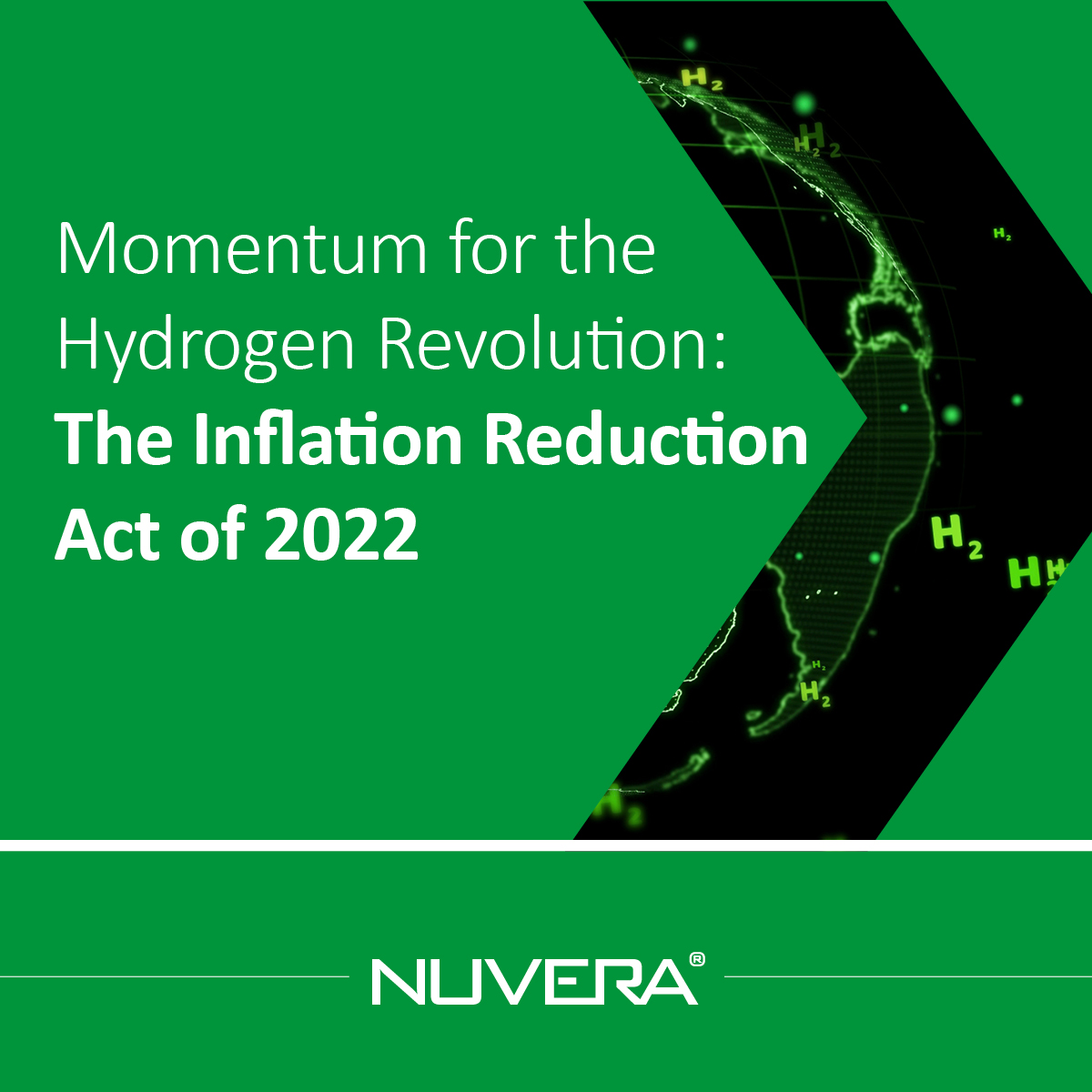The Inflation Reduction Act (IRA) of 2022, passed and signed into law in August by President Joe Biden, represents the largest climate investment in U.S. history – and likely a momentous acceleration of hydrogen and fuel cell adoption.
There is growing consensus that hydrogen will play a critical role in addressing some of the most intractable clean energy challenges of our time. As a provider of hydrogen fuel cell technology, Nuvera believes that the IRA has the potential to position the US as the leader of the clean energy revolution.
A key provision of the Inflation Reduction Act gives a a $3 per kilogram tax credit to hydrogen produced with renewable energy and nuclear energy. The law will incentivize energy products to offer cleaner ways to make hydrogen, and end users to switch to hydrogen as a replacement for fossil fuels.
By 2050, between 60 and 80 percent of hydrogen production will be powered by renewables, according to a November report on the industry published by the Hydrogen Council in collaboration with McKinsey & Co. The largest end use for hydrogen by 2050 is expected to be mobility, including heavy trucking, long-range flights and container ships, according to the report.
The IRA also allocates $3 billion over five years to install electrified equipment and reduce emissions at ports. Alongside these funds, the IRA contains other provisions ports can benefit from – including $1 billion for the replacement of heavy-duty vehicles with zero-emissions alternatives.
Port and maritime applications are in the vanguard as drivers for accelerating hydrogen adoption. Nuvera is poised to help decarbonize container handlers and other diesel equipment used around the clock at shipping ports, which are a source of significant local air pollution and greenhouse gases, with high efficiency fuel cell engines.
The U.S. military could also become a big consumer of hydrogen power. For the Department of Defense, there are clear strategic and tactical advantages of fuel cells over both diesel internal combustion engines or battery-only powertrains. For example, electric equipment is quieter and easier to use in the field than mechanical drivetrains. Fuel cell electric vehicles generally provide greater range than battery electric vehicles, can be quickly refueled, and perform reliably in cold weather. Fuel cells also have lower heat and EM signatures than internal combustion engines, which may enable them to better avoid detection by enemies.

Here are some reflections from Nuvera employees on the significance of the Inflation Reduction Act:
“The IRA is nothing less than an historic milestone – the biggest climate investment ever made by a single country, with many hydrogen-specific provisions. It will give confidence both to industry and to investors that the U.S. is serious about hydrogen, with the U.S. surpassing Europe and China regarding their federal commitments.”
– Lucien Robroek, Chief Executive Officer
“I couldn’t put it better than Energy Secretary Jennifer Granholm did at in her keynote address at this month’s Hydrogen Americas Summit: ‘It’s Go Time for clean hydrogen!’”
– Kedar Murthy, Chief Commercial Officer
“The IRA’s $3/kg incentive for clean hydrogen production means that the U.S. is set to leapfrog over the rest of the world to enable large-scale fuel cell transport electrification. That’s in addition to $8 billion authorized last year for the Department of Energy’s Hydrogen Hub program, and its ‘1-1-1’ Energy Earthshot: to reduce the cost of clean hydrogen by 80% to $1 per 1 kilogram in one decade.”
– Gus Block, Director of Corporate Development
In the face of the unavoidable effects of climate change, Nuvera is creating real-world solutions to meet the growing number of emissions mandates and make tangible strides toward decarbonization. Nuvera celebrates this historic bill, and we look forward to joining forces with others working to move toward a cleaner, greener future by embracing hydrogen power solutions. The Inflation Reduction Act will have a major impact on the future of clean hydrogen and the role that fuel cells will play in decarbonizing the energy, transportation, and heavy industry sectors.
